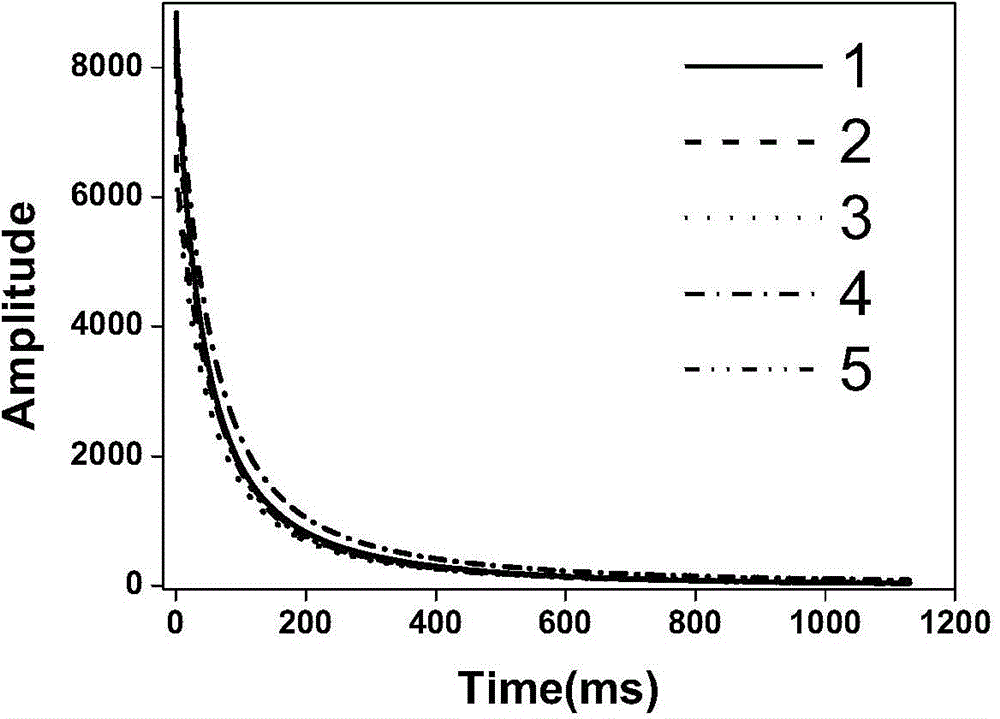Cage for mouse in waking state and application of cage
An awake state and cage technology, applied in applications, medical science, sensors, etc., can solve problems such as expensive anesthetics, reduced food intake of mice, and lower body temperature, achieving strong practicability, operability, and fast detection speed , cheap effect
- Summary
- Abstract
- Description
- Claims
- Application Information
AI Technical Summary
Problems solved by technology
Method used
Image
Examples
Embodiment 1
[0019] Embodiment 1: the making of mouse cage
[0020] The typical size of the design of the mouse cage: the outer diameter of the cylinder 1 is 29mm, the inner diameter is 23mm, the diameter of the side wall hole is 5mm, and the total length is 200mm; the length of the plug 2 is 40mm, the outer diameter is 29mm, and the inner diameter is 23mm; The outer diameter is 22mm, the groove width is 4mm ( figure 2 ). Made of polytetrafluoroethylene according to the size of the drawing.
Embodiment 2
[0021] Example 2: Carrying out nuclear magnetic resonance analysis using a mouse cage
[0022] Five mice were purchased with a mass of 21.54 ± 5.65 g. Put the mouse into the barrel 1, and fix the mouse by screwing in the plug 2 and advancing the push-pull rod 3. Using the MiniMR-Rat magnetic resonance imaging analyzer, using the CPMG sequence, the transverse relaxation curve of the mouse was measured, and the parameters were set as: 90-degree pulse width P 1 :13μs, 180 degree pulse width P 2 :26μs, resampling waiting time Tw:3000ms, analog gain RG1:15, digital gain DRG1:3, preamplifier gain PRG:1, resampling times NS:8, number of echoes NECH:5000, receiver bandwidth SW : 200KHz, the control parameter RFD of the start sampling time: 0.01ms, the time delay DL1: 0.1ms, and obtain the transverse relaxation curve of each sample ( image 3 ). Use the IR sequence to measure the longitudinal relaxation curve of the mouse, and the parameters are set as: 90-degree pulse width P 1 :...
Embodiment 3
[0023] Example 3: Magnetic resonance imaging using a mouse cage
[0024] Select a mouse weighing 17.93g, put the mouse into cylinder 1, and fix the mouse by screwing in plug 2 and advancing push-pull rod 3. Using MiniMR-Rat magnetic resonance imaging analyzer, using SPINECHO (SE) sequence for magnetic resonance imaging, the parameters are set as: slices: 4, FovRead: 100mm, FovPhase: 100mm, slicewidth: 2.5mm, slicegap: 0.5mm, Readsize: 256 , Phasesize: 192, Average: 4, TR: 500ms, TE: 20ms, the magnetic resonance imaging ( Figure 5 ). Depend on Figure 5 The tissues and organs of the mice can be clearly seen, indicating that the cage can be used for magnetic resonance imaging of mice.
PUM
 Login to View More
Login to View More Abstract
Description
Claims
Application Information
 Login to View More
Login to View More - R&D
- Intellectual Property
- Life Sciences
- Materials
- Tech Scout
- Unparalleled Data Quality
- Higher Quality Content
- 60% Fewer Hallucinations
Browse by: Latest US Patents, China's latest patents, Technical Efficacy Thesaurus, Application Domain, Technology Topic, Popular Technical Reports.
© 2025 PatSnap. All rights reserved.Legal|Privacy policy|Modern Slavery Act Transparency Statement|Sitemap|About US| Contact US: help@patsnap.com



